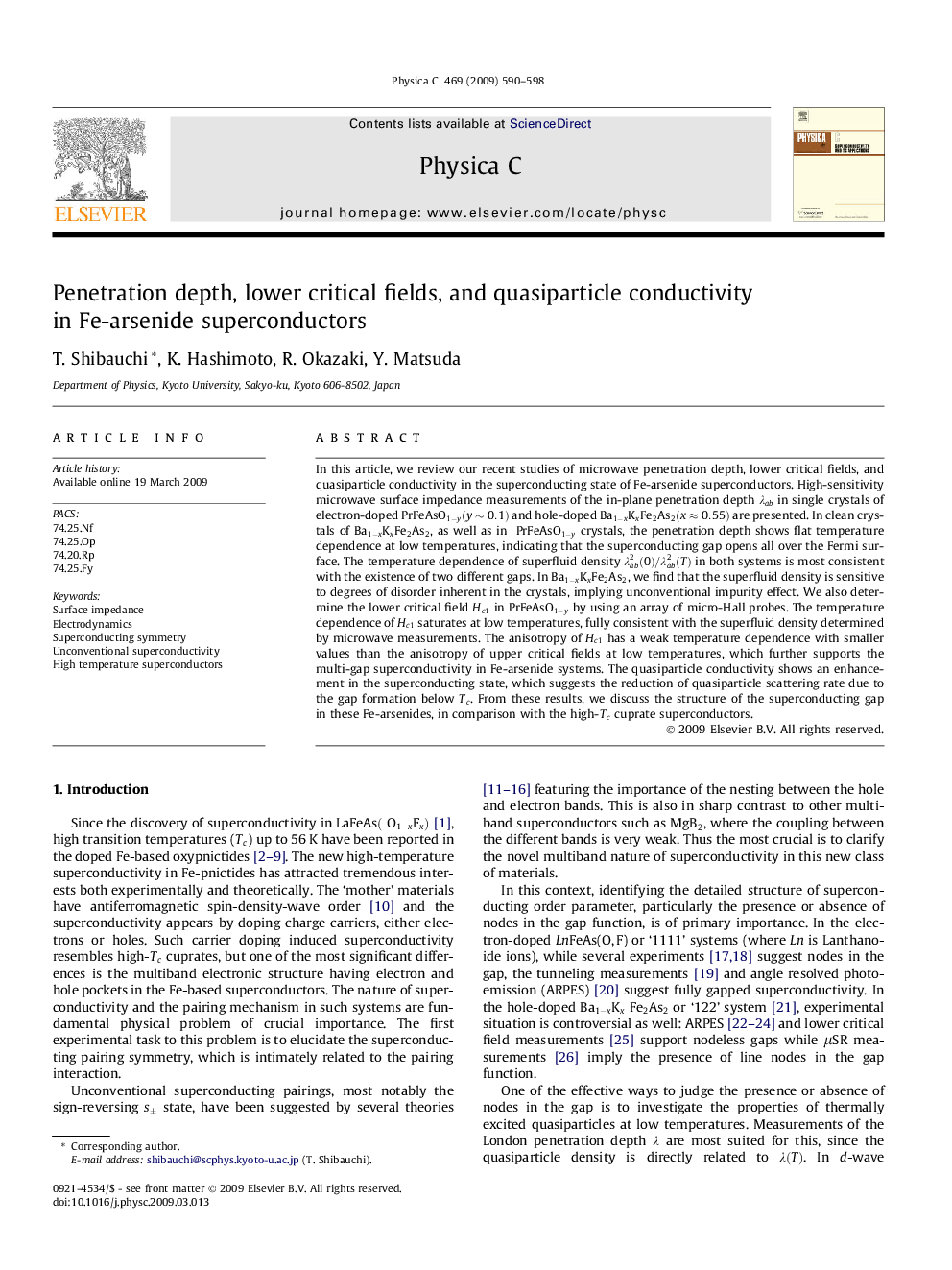| کد مقاله | کد نشریه | سال انتشار | مقاله انگلیسی | نسخه تمام متن |
|---|---|---|---|---|
| 1819127 | 1525762 | 2009 | 9 صفحه PDF | دانلود رایگان |

In this article, we review our recent studies of microwave penetration depth, lower critical fields, and quasiparticle conductivity in the superconducting state of Fe-arsenide superconductors. High-sensitivity microwave surface impedance measurements of the in-plane penetration depth λabλab in single crystals of electron-doped PrFeAsO1-y(y∼0.1)PrFeAsO1-y(y∼0.1) and hole-doped Ba1-xKxFe2As2(x≈0.55)Ba1-xKxFe2As2(x≈0.55) are presented. In clean crystals of Ba1-xKxFe2As2Ba1-xKxFe2As2, as well as in PrFeAsO1-y crystals, the penetration depth shows flat temperature dependence at low temperatures, indicating that the superconducting gap opens all over the Fermi surface. The temperature dependence of superfluid density λab2(0)/λab2(T) in both systems is most consistent with the existence of two different gaps. In Ba1-xKxFe2As2Ba1-xKxFe2As2, we find that the superfluid density is sensitive to degrees of disorder inherent in the crystals, implying unconventional impurity effect. We also determine the lower critical field Hc1Hc1 in PrFeAsO1-yPrFeAsO1-y by using an array of micro-Hall probes. The temperature dependence of Hc1Hc1 saturates at low temperatures, fully consistent with the superfluid density determined by microwave measurements. The anisotropy of Hc1Hc1 has a weak temperature dependence with smaller values than the anisotropy of upper critical fields at low temperatures, which further supports the multi-gap superconductivity in Fe-arsenide systems. The quasiparticle conductivity shows an enhancement in the superconducting state, which suggests the reduction of quasiparticle scattering rate due to the gap formation below TcTc. From these results, we discuss the structure of the superconducting gap in these Fe-arsenides, in comparison with the high-TcTc cuprate superconductors.
Journal: Physica C: Superconductivity - Volume 469, Issues 9–12, 1 May–15 June 2009, Pages 590–598